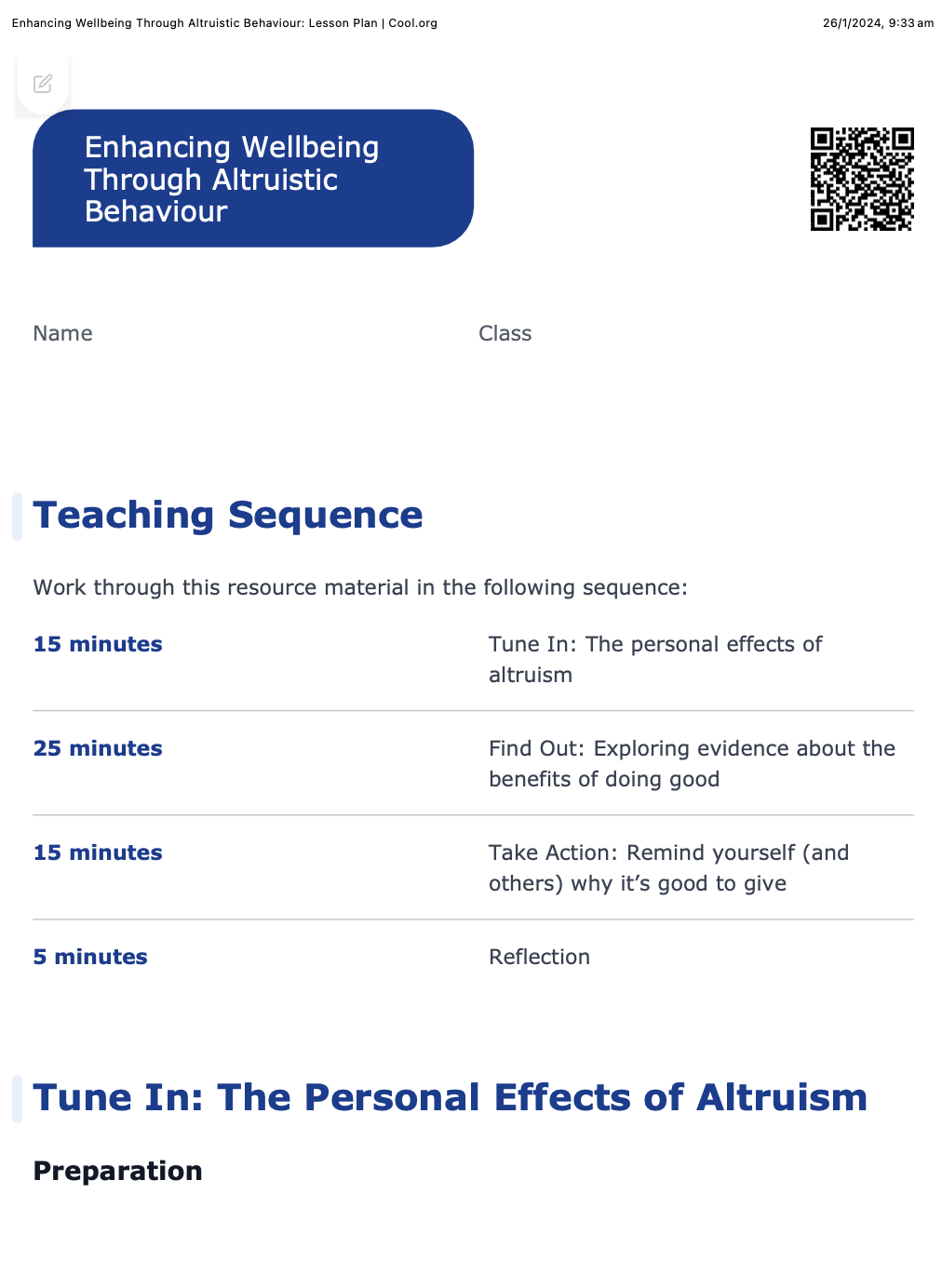Lesson summary
Students will explore how compassionate giving can enhance the health and wellbeing of themselves and others by analysing health data about the relationships between altruism and wellbeing.
Learning intentions:
Students will...
- understand the positive effects of altruistic behaviour on wellbeing and explore the evidence supporting the idea that giving and helping others can have physical and mental health benefits.
Success criteria:
Students can...
- identify and define key terms related to altruism
- analyse and interpret data related to altruism and wellbeing
- construct arguments supported by evidence to explain the benefits of altruistic behaviour
- design and present a message that reminds themselves and others about the importance of helping others.
Lesson guides and printables
Curriculum links
Select your curriculum from the options below.
Lesson details
Skills
This lesson is designed to build students’ competencies in the following skills:
- critical thinking
- empathy
- global citizenship
- reflection
Curriculum Mapping
Australian Curriculum (v9.0) content description:
- Plan and implement strategies using health resources to enhance their own and others’ health, safety, relationships and wellbeing (AC9HP8P10)
General capabilities: Literacy, Personal and Social Capability
Syllabus outcomes: PD4-3
Relevant parts of Year 7 & 8 achievement standards: Students analyse health information and messages to propose strategies that enhance their own and others’ health, safety, relationships and wellbeing.
UN Sustainable Development Goals
UN SDG 1: End poverty in all its forms everywhere
- Target 1.1: By 2030, eradicate extreme poverty for all people everywhere, currently measured as people living on less than $1.25 a day.
Resources Required
- Highlighters
- Individual devices capable of accessing the internet
- Reading: Doing Good and Feeling Good: Relationships Between Altruism and Well-being for Altruists, Beneficiaries, and Observers (1 per student, or can be accessed digitally)
- Student Worksheet (1 per student)
Additional Info
This lesson has been developed with the support of The Life You Can Save.
The Life You Can Save conducts research to identify non-profits running highly impactful programs that address the multiple dimensions of poverty. They also help connect people who want to donate money and resources with these non-profits to maximise the impact of their gifts. They aim to create a world where everyone has an opportunity to build a better life and where there’s no suffering or death due to extreme poverty. The Life You Can Save was founded by Melbourne-born Peter Singer, widely recognised as one of the world’s most influential contemporary philosophers, to advance the ideas in his 2009 book The Life You Can Save: Acting Now to End World Poverty (republished 2019). Since then, they’ve worked to introduce the ideas from Professor Singer’s book to new audiences, inspiring people to help others experiencing poverty around the world and empowering them to make the greatest impact possible.
Level of teacher scaffolding: Low – facilitate class discussion.
Related Professional Learning
Ethical Understanding in the Australian Curriculum v9
Explore how to teach the General Capability of Ethical Understanding as of version 9 of the Australian Curriculum. Learn what Ethical Understanding involves and how to incorporate ethics into your regular teaching.




Welcome back!
Don't have an account yet?
Log in with:
Create your free Cool.org account.
Many of our resources are free, with an option to upgrade to Cool+ for premium content.
Already have an account?
Sign up with:
By signing up you accept Cool.org's Terms and Conditions(Opens in new tab) and Privacy Policy(Opens in new tab).